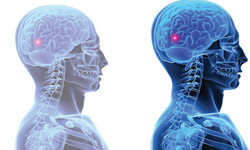An update on 2008
In last year's Annual Research Review, we covered some of the University's most exciting research projects. This section gives a brief update on some of those projects since publication.
Non-invasive measurement technology

Research at the Centre for Physical Electronics and Quantum Technology (CPEQT) has progressed considerably, both scientifically and in moving the Electronic Potential Sensor towards commercialisation. Business development activities have accelerated and prototype sensors are being manufactured. These sensors are now being supplied for evaluation to a number of commercial medical organisations around the world. In addition, interest from the security sector has led to pilot projects to assess the capabilities of the technology for passive sensing. Related to this, CPEQT is developing entirely new human-machine interface techniques, which have the potential to impact on areas as diverse as computer games, assisted living and gesture recognition.
Non-invasive measurement technology - Review 2008 archive
Crime or consent?

Since the publication of Professor Jennifer Temkin's book Sexual Assault and the Justice Gap: A Question of Attitude, written with Barbara Krahe, Jennifer has been assisting the Crown Prosecution Service in Sussex with their training programmes for Crown Prosecutors and senior police officers. Drawing on the themes of the book, these sessions are aimed at debunking and challenging the myths and stereotypes that surround rape and rape victims with a view to enhancing the quality and quantity of prosecutions. Professor Temkin has also been made an Academician of the Academy of Social Sciences and has been elected a Bencher of the Middle Temple, the governing body of one of the Inns of Court.
Crime or consent? - Review 2008 archive
The Newton Project

In the last year the project has transcribed and put online a number of highly significant texts, most of which have never been seen by more than handful of people. Although still seeking funding to complete the final 10 per cent of Newton's theological papers, the project has been given substantial support from the Joint Information Systems Committee to put online transcriptions and translations of all editions of his major scientific works, the Principia and Opticks. More funding is being sought in order to transcribe Newton's major mathematical notebooks and texts containing the research that led to his discovery of the calculus and binomial theorems. The project is beginning to work with schools to make Newton's mathematical and scientific texts accessible to schoolchildren.
The Newton Project - Review 2008 archive
Research in the Clinical Imaging Sciences Centre

The quantitative magnetic resonance imaging method has been used by Novartis, the Swiss pharmaceutical company, to measure changes in myelin (the insulating sheath around brain neurons). The company could use this method to evaluate the success of their potential drug treatments for multiple sclerosis. Once an Intellectual Property agreement between the University and Siemens Medical is signed, Quantitative Magnetisation Transfer Imaging will be available at the Clinical Imaging Science Centre. It will be used to look for subtle damage to brain tissue. Several conditions that have their origins outside the brain (lupus, HIV and chronic kidney disease), in addition to psychiatric conditions, will be investigated.
Research in the Clinical Imaging Sciences Centre - Review 2008 archive
Grasses bite back

In a busy year for Professor Sue Hartley, a new research project is underway testing whether silica levels in grasses are associated with changes in vole abundance over large areas of natural habitat. The project is in collaboration with the University of Aberdeen and will cost in excess of £600,000 over three years. In addition, the research team have pioneered a new method of measuring silica in grasses using x-ray fluorescence spectrometry. This will allow the analysis of the large number of samples required to test the effects of silica defences over large spatial scales. The team have also found that a high silica diet is so abrasive it can wear down insect jaws and so have progressive and irreversible impacts on the growth of insect herbivores.
